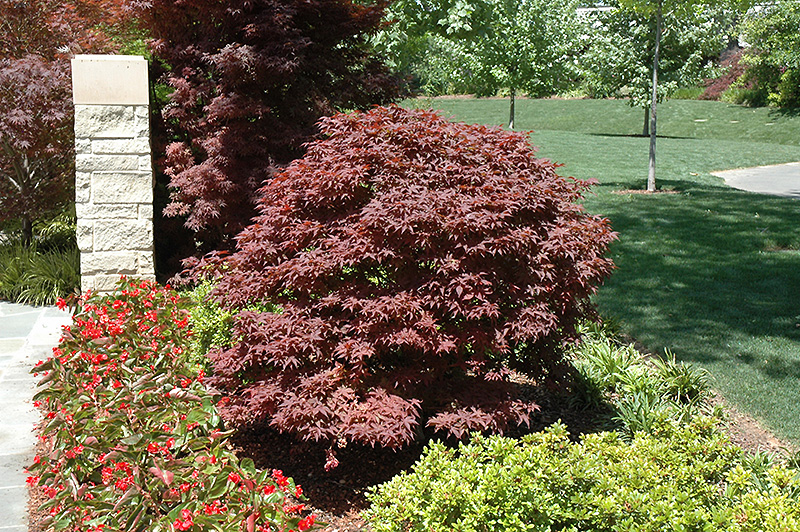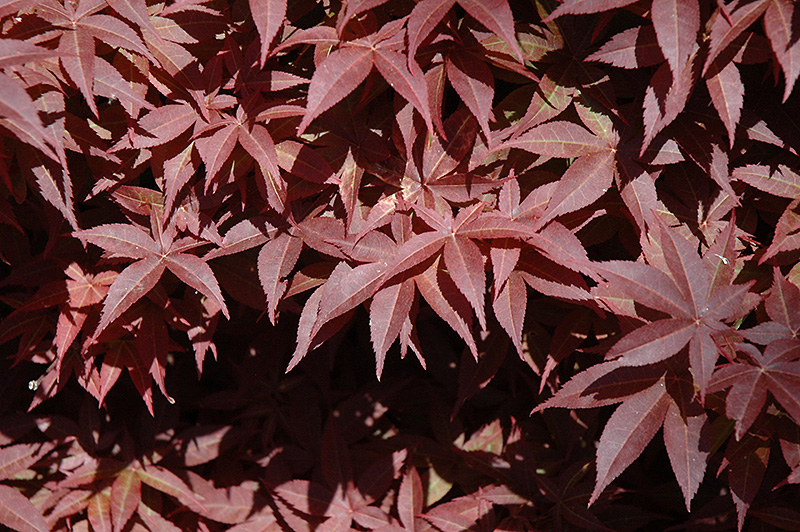Rhode Island Red Japanese Maple
Acer palmatum 'Rhode Island Red'
Height: 12 feet
Spread: 12 feet
Sunlight:
![]()
![]()
Hardiness Zone: 4b
Description:
A stunning landscape choice, this fine accent tree features dense compact branching and bright red spring foliage that darkens to deep red through summer; outstanding orange-red in fall; a highly desirable specimen for the garden or landscape
Ornamental Features
Rhode Island Red Japanese Maple is primarily valued in the landscape or garden for its ornamental globe-shaped form. It features subtle corymbs of red flowers rising above the foliage in mid spring before the leaves. It has attractive burgundy deciduous foliage which emerges cherry red in spring. The lobed palmate leaves are highly ornamental and turn outstanding shades of orange and red in the fall. The rough gray bark and red branches add an interesting dimension to the landscape.
Landscape Attributes
Rhode Island Red Japanese Maple is a dense deciduous tree with a more or less rounded form. Its relatively fine texture sets it apart from other landscape plants with less refined foliage.
This is a relatively low maintenance tree, and should only be pruned in summer after the leaves have fully developed, as it may 'bleed' sap if pruned in late winter or early spring. It has no significant negative characteristics.
Rhode Island Red Japanese Maple is recommended for the following landscape applications;
- Accent
- General Garden Use
Planting & Growing
Rhode Island Red Japanese Maple will grow to be about 12 feet tall at maturity, with a spread of 12 feet. It has a low canopy with a typical clearance of 3 feet from the ground, and is suitable for planting under power lines. It grows at a slow rate, and under ideal conditions can be expected to live for 80 years or more.
This tree does best in full sun to partial shade. You may want to keep it away from hot, dry locations that receive direct afternoon sun or which get reflected sunlight, such as against the south side of a white wall. It prefers to grow in average to moist conditions, and shouldn't be allowed to dry out. It is not particular as to soil pH, but grows best in rich soils. It is somewhat tolerant of urban pollution, and will benefit from being planted in a relatively sheltered location. Consider applying a thick mulch around the root zone in winter to protect it in exposed locations or colder microclimates. This is a selected variety of a species not originally from North America.





